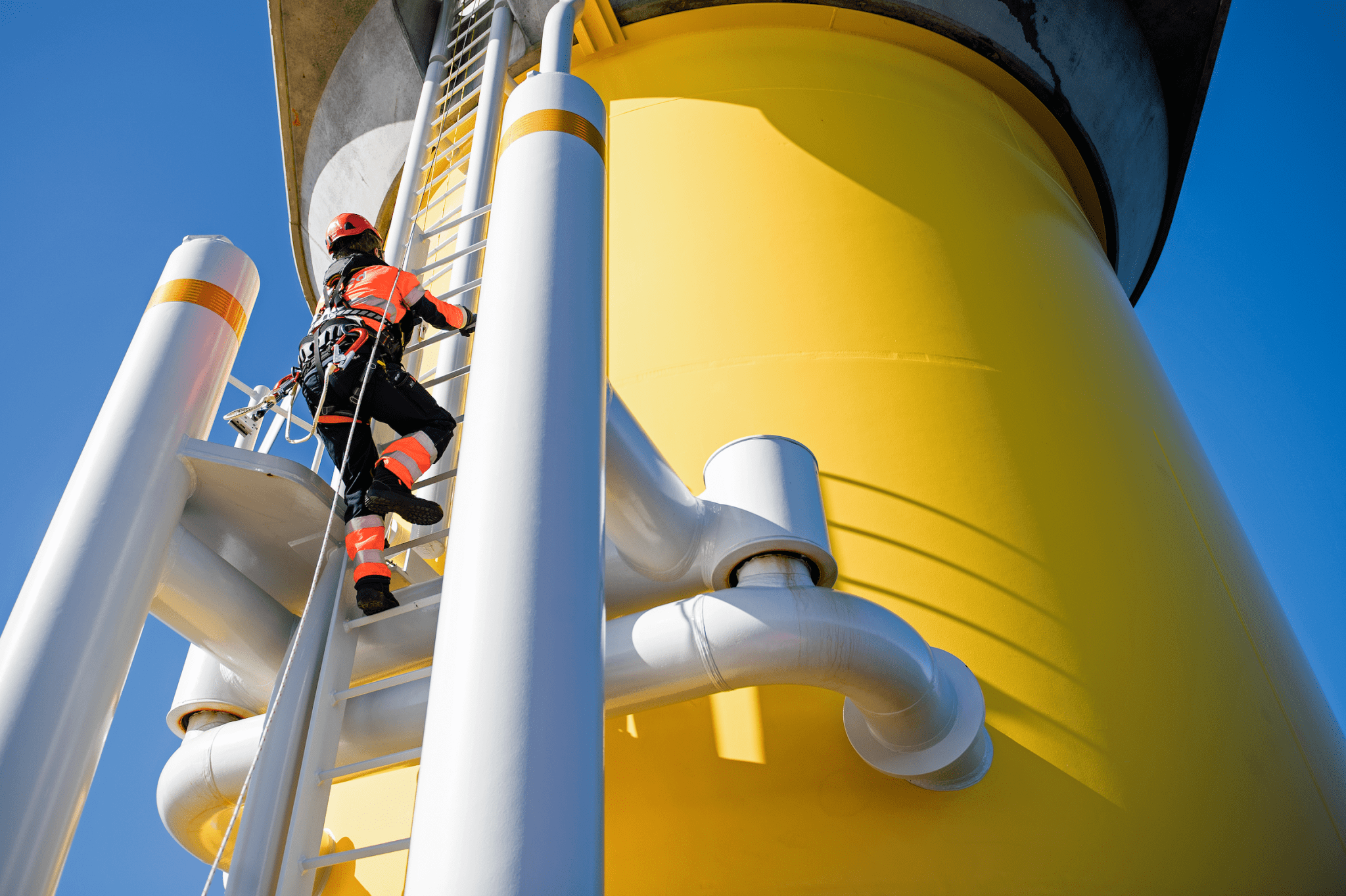Green energy is at the forefront of the Biden administration’s goals for the next four years. On March 29, 2021, the White House specified this goal: 30,000 megawatts of offshore wind by 2030. Part of that energy output will come from New Jersey. Furthermore, plans were approved last summer to construct America’s largest wind farm off the coast of Atlantic City. These arrangements promise a cleaner and greener source of energy for the country and make the Garden State more sustainable. But what is wind power, and what will New Jersey wind farms look like?
How Wind Farms Generate Electricity
The wind is air in motion, and everything that’s in motion has kinetic energy. As wind power passes through a turbine, causing it to spin, it generates electricity. Electric energy is a type of kinetic energy and can be stored in a generator or dispersed through a power grid. These turbines are frequently built in groups called wind farms.
As the ocean heats faster than land, this heat differential causes the wind to blow from the ocean onto land. With this, a wind farm offshore will generate more energy more consistently than land-based farms. In 2020 alone, offshore wind-generated 35.3 gigawatts of electricity, which is enough to power 3.8 billion LED light bulbs. As this type of renewable energy begins to come to New Jersey’s oceans, it will take the form of two main projects.

Atlantic City’s New Wind Farm
As early as 2015, the Bureau of Ocean Energy Management (BOEM) began accepting lease proposals for wind farms off the coast of New Jersey. This area is located 15 miles from the coast of Atlantic City, where the water is approximately 100 feet deep. In June 2019, Ørsted, a Danish energy company, finalized negotiations with the New Jersey Board of Public Utilities. This point also marked the beginning of Ørsted’s professional partnership with PSE&G on the project. The farm, currently titled “Ocean Wind” will consist of 90 wind turbines, each of which will be over 800 feet tall. The turbines will occupy over 160,000 acres, making Ocean Wind one of the largest offshore wind farms in the country.
Currently, Ocean Wind is still in its infancy, only one year into its six-year timeline. As per the project’s website, Ørsted is conducting the first two of five steps simultaneously—environmental impact studies and public hearings alongside geological studies of the ocean floor. The project’s final steps include designing the farm, manufacturing the components, and installation, which is slated to begin in 2024. When completed, Ocean Wind will generate 1,100 MW of energy and utilize the defunct Oyster Creek Nuclear Generating Station in Forked River, NJ for energy storage and transmission to the rest of the state. In December 2020, Ørsted also put in a bid to expand the farm under the name “Ocean Wind 2” which will generate an additional 1,200 MW and power 500,000 homes if approved.

The New York/New Jersey Bight Project
The Biden administration plans specifically include the intention to construct turbines in the waters of New York and New Jersey. This area is called the New York/New Jersey Bight. It’s a stretch of ocean water spanning from southern New Jersey to Long Island that is incredibly shallow. These shallow waters are the perfect place for a wind farm as it makes construction and maintenance an easier hurdle to overcome. BOEM has identified 800,000 acres that could potentially be home to the new wind farm. Although, the actual footprint of the farm will not occupy this whole space. Given the recency of this proposal, it’s not clear if Ørsted and PSE&G will be involved, and leases won’t be signed until later this year.
How do you feel about wind energy coming to New Jersey? Let us know in the comments.
Featured image courtesy of Nicholas Doherty on Unsplash
I'm a scientist obsessed with New Jersey's environment and geology. I'm probably reading science fiction. Or watering my plants.
- Kevin Hurlerhttps://thedigestonline.com/author/khurler/
- Kevin Hurlerhttps://thedigestonline.com/author/khurler/
- Kevin Hurlerhttps://thedigestonline.com/author/khurler/
- Kevin Hurlerhttps://thedigestonline.com/author/khurler/


